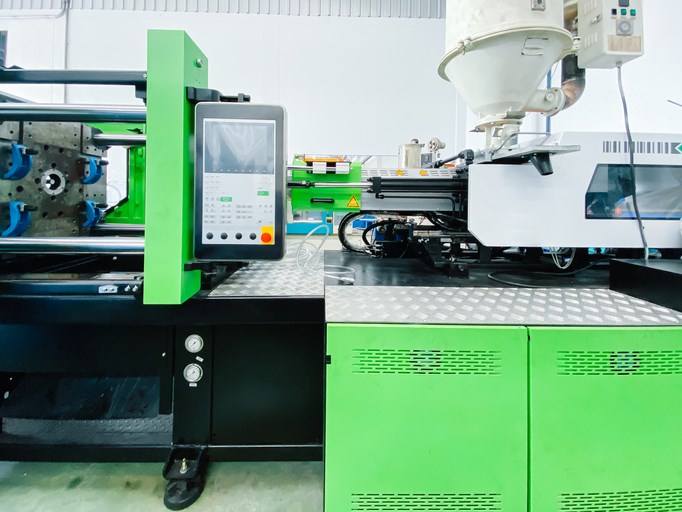
When it comes to versatility in plastic manufacturing, few methods rival the capabilities of injection molding. Critical industries like automotive, healthcare, consumer products, and electronics rely on injection molding for the consistent production of everything from complex plastic parts with tight tolerances to simple shoot-and-ship parts with standardized designs. Beyond this, injection molding itself has evolved to encompass specific processes that meet the unique requirements of various applications. But which type of injection molding is right for your product?
Figuring that out requires analyzing factors like part complexity, material selection, and production volume. Let’s take a closer look at a few types of injection molding — including standard, two-shot, gas-assisted, and overmolding — to find out how each is tailored to meet specific part needs.
Types of Injection Molding: Standard
Standard injection molding is the most commonly used method and serves as the foundation for producing plastic parts at scale. In other words, this is the method from which all other types of injection molding derive. During this process, plastic pellets are heated and injected into a mold, where the material cools and solidifies into the desired shape.
Thanks to its efficiency and cost-effectiveness over the long run, standard injection molding is ideal for high-volume manufacturing. It can handle a wide range of thermoplastic materials, from commodity and engineered thermoplastics to high-performance polymers and custom resins.
A few industry applications include:
- Automotive: Durable, precise components like dashboards, housings, and interior trim
- Consumer Goods: Everyday items like packaging, household products, and toys
- Electronics: Enclosures, connectors, and various small parts used in consumer electronics
- Healthcare: Medical device housings and disposable single-use plastic products like syringes
The most notable advantages of standard injection molding are its speed, efficiency, and repeatability in high-volumes.
Two-Shot Injection Molding
Also known as multi-shot injection molding if more than two materials are used, two-shot injection molding is an advanced manufacturing process that allows for the injection of two (or more) different materials into a single mold during one production cycle. It’s one of the types of injection molding that enables manufacturers to create complex custom parts with multiple materials or colors without the need for additional assembly or secondary operations.
This simultaneous injection helps to bond the materials together at the molecular level, resulting in a finished product that offers unique aesthetic and functional properties.
Two-shot injection molding is particularly beneficial for applications that require multi-materials or multi-color parts, including:
- Electronics: Components like grips for tools or housings for devices that require both rigid and soft materials.
- Medical: Complex medical devices that combine rigid structures with soft-touch surfaces for enhanced usability and comfort.
- Consumer Products: Stylish and functional items, such as toothbrushes or kitchen gadgets, where aesthetics and ergonomics are important.
The stand-out advantages of two-shot injection molding are improved product aesthetics, increased part functionality, and reduced production time.
Types of Injection Molding: Gas-Assisted
Gas-assisted injection molding is a specialized technique that involves injecting an inert gas, usually nitrogen, into the mold after the initial injection of the plastic material. This injection of gas serves to push the plastic away from the core of the mold, effectively creating a hollow section within thicker parts. This significantly amplifies the design flexibility while enhancing the performance of the molded component.
Especially useful for producing thick-walled and/or lightweight components, gas-assisted is an invaluable type of injection molding for:
- Automotive: Lightweight and durable components such as bumpers, dashboard parts, and interior panels.
- Furniture: Structural parts for furniture that require a balance of strength and lightweight characteristics.
- Appliances: Casing and structural elements for home appliances, ensuring they are sturdy but light.
Some of the biggest benefits of gas-assisted injection molding are its ability to reduce cycle times, minimize warping, and yield lightweight parts.
Types of Injection Molding: Overmolding
Finally, the last type of injection molding that we’ll cover is overmolding. Overmolding is another specialized technique that involves molding a second material over an already molded component (aka the substrate). It’s a process that, similar to two-shot injection molding, allows manufacturers to combine two different materials to produce a single part with enhanced performance and functionality. Unlike two-shot, which injects two materials in the same cycle, overmolding involves two distinct steps: molding and then overmolding.
This technique is commonly used to combine hard and soft materials to create things like:
- Products like toothbrushes: Comfortable grip and ease of use.
- Power tools: Enhancing user comfort with soft-touch grips and improving overall ergonomics.
- Medical devices: User-friendly interfaces that ensure safety and hygiene.
- Electronics: Added protection and durability for sensitive components.
The main advantages of overmolding are parts with increased durability, better ergonomics, and improved product feel.
For an Injection Molder with Versatile Capabilities, Choose Thogus
At Thogus, we specialize in providing high-volume, high-precision injection molding solutions designed to meet your specific requirements. Our extensive knowledge encompasses various injection molding techniques — including standard, two-shot, gas-assisted, and overmolding — enabling us to select the most effective approach for your unique applications.
Driven by a commitment to quality and operational efficiency, we utilize advanced technology and meticulous tooling management to ensure seamless execution from the initial design phase through to final production.
Whether you need multi-material options, complex designs, or quick turnaround times, our dedicated team is poised to deliver the engineering support and white glove service that set us apart in the industry.
Get in touch with us today to learn how our injection molding expertise can help you achieve outstanding results for your upcoming project.
Experience the Thogus Difference
Connect with us today to discuss your project and to learn more about our capabilities.